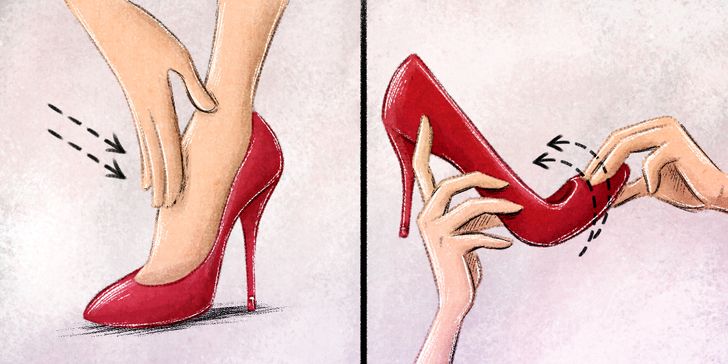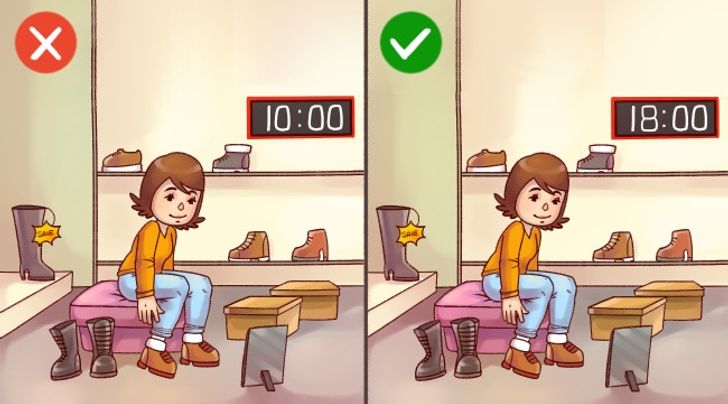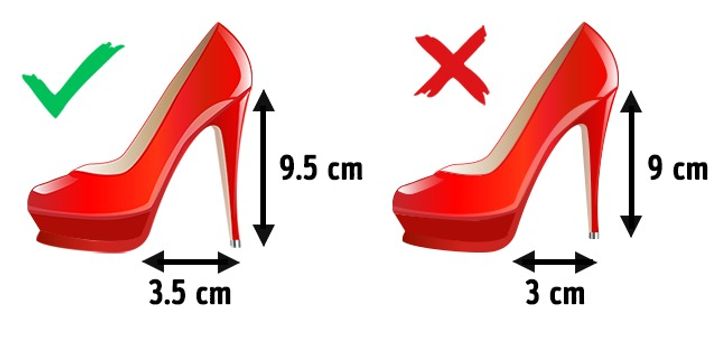The ability to choose quality and stylish shoes can be compared to a true artistic talent. Walking into a shop, you should have a clear idea of what you are looking for and enough willpower to avoid buying shoes based only on their outward appearance.
We at Bright Side decided to find out for sure which nuances one must pay attention to when buying new shoes. Today we happily share the results of our research with you!

- Make sure that the toe part and the heel keep their shape. When you squeeze them and then let go, no lasting deformations should remain. The heel must be rigid — a soft heel can sag quickly, which will bring you a lot of inconvenience when walking.
- You should choose the size of your new shoes based on the size of your larger foot. Believe it or not, many people have one foot slightly larger than the other. Therefore, you should try on several pairs of different sizes and settle on the one in which both feet feel comfortable.
- Stability should be among your mandatory requirements when shopping for new shoes. If you’re trying on high-heeled shoes, and the heel slides, this is a sign that the pair is not worth buying unless you’re prepared to face drawbacks such as a wobbly gait and loss of balance (something which is sure to cost you a lot of nerves).

- You should also pay attention to the flexibility of the sole. Take a shoe in one hand, and try to bend its toe part with the other. An insufficiently flexible sole prevents the foot joints from moving normally. This may result in gait disorders/rapid fatigue and cause the body to increase energy consumption.
- You shouldn’t buy shoes that restrict the foot in the hope that you’ll soon manage to wear them in. This can lead to problems. Moreover, such shoes quickly lose their presentable appearance.
To ensure avoiding such a situation, stand in your socks on a sheet of construction paper, and outline the shapes of both your right and left foot with a pen. Cut out those outlines. Next time you’re in a shop, insert the cutouts into the shoes you want to purchase. Both of them must fit into the shoes without bending at the edges.
- We advise you to shop for new shoes in the late afternoon. Toward the end of the day our feet become slightly swollen. This means that a pair of shoes that fitted you perfectly in the morning might feel too tight in the evening. Better to nip this problem in the bud, and choose a pair that’ll feel comfortable around the clock!

- Always check new shoes by hand from the inside. The inner surface should be soft, without rough internal seams. The insole should be supple and easy to remove.
- When trying on new shoes, make sure to walk a few steps across a solid surface. Soft carpets can make any shoes feel comfortable. To get a better idea, walk off the carpet and onto the bare floor!

- If you’re thinking of buying high-heeled shoes, the maximum heel height should be 7.5-10 cm. The acceptable distance between the sole and the heel should be the most comfortable for you. Remember that the shorter the distance, the less stable the shoes become and the more weight is transferred to the toes.
- You need to remember that your feet can increase in size, mostly due to elasticity, weight, and deformities, so you should measure them from time to time.

- When trying on high-heeled shoes, it is crucial to make sure that your foot doesn’t slide along the block. With time, the shoes will wear in, causing the feet to slide even further forward, which might lead to heel breakage.
- If the shoes have an elongated toe part, there should be a 1-2 cm free space left in the toe.
